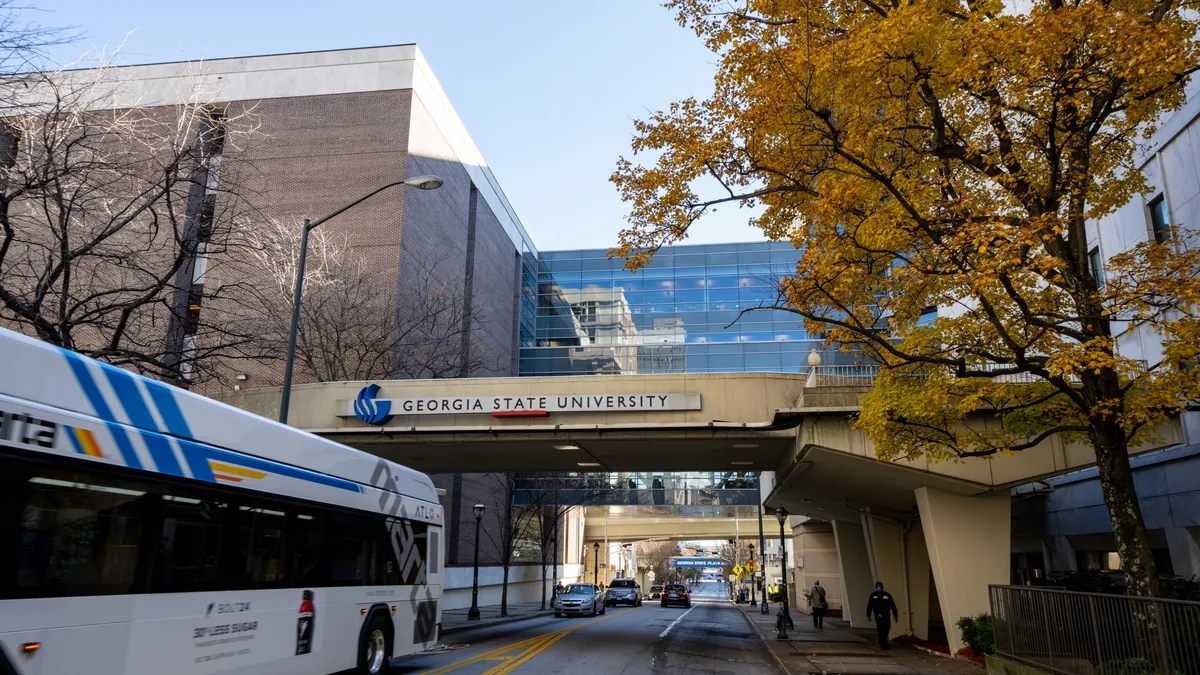Dive Brief:
- Georgia State University plans to invest $107 million into campus upgrades meant to connect students to each other and the surrounding community, the public institution announced Tuesday.
- Nine projects are planned for parts of the Atlanta university's campus that neighbor two public city parks, including the demolition of a building to create more open outdoor space. Most of the campus upgrades are s et to be completed in 18 months, before Atlanta hosts the World Cup soccer games in June 2026.
- The bulk of the funding came from a $80 million donation from the Robert W. Woodruff Foundation, a nonprofit dedicated to improving life in Georgia. The 52,000-student university called it the largest gift in its history, as well as the largest donation the foundation has given to any University System of Georgia institution.
Dive Insight:
While Georgia State's first president, George Sparks, envisioned the university having campus spaces distinct from the city's downtown streets, its current administration wants to integrate the campus into Atlanta.
“When previously it was ‘how do we get isolated from the city?’ now our idea is really just being the city,” Jared Abramson, the university's executive vice president and chief operating officer, said in a statement. “A true integration between the campus and the city is the only way to make it happen.”
Georgia State's board of regents on Tuesday approved the construction plans, known as the Building Pathways for Success Initiative.
The institution's campus sits in the middle of Atlanta, and several of its classroom and administrative buildings neighbor Woodruff Park and Hurt Park. Like the foundation, Woodruff Park is named for Robert Woodruff, a prominent Atlanta businessman who led the Coca-Cola Co. for more than a quarter of the 20th century.
Georgia State will take a more active role in operating the Woodruff Park, according to Abramson. The new projects around the six-acre park include building new sidewalks and improving the city’s public streetcar platform.
“We want to make Woodruff Park a true community space that’s even more open and welcoming to students,” Abramson said.
Sparks Hall, an academic and facilities building next to Hurt Park, will be demolished, the university said. An expanded greenway with an elevated plaza and enhanced walkways will go where the 69-year-old building once stood.
Georgia State is partnering with nearby Grady Hospital to help provide services to unhoused individuals who frequent the parks.
“While we work on some of the larger issues, our plan is to redesign the physical space so that we can peacefully and productively coexist,” Abramson said. “We're working with our partners and the city so we can get to a place where that population is well-served and doesn't have to use the park as a place to live.”
On Tuesday, Atlanta Mayor Andre Dickens, an alum of Georgia State, lauded the university's plan as a great way to connect the parks and improve the downtown experience.
Georgia State has described its campus as a "loosely connected network of dorms, libraries, research centers and classroom buildings."
Tuesday's slate of facilities projects will build on the university's current efforts to create a stronger sense of place. That includes the GSU Blue Line, an almost-four mile marked walking path meant to connect the campus. It is expected to be completed by the end of 2026.










